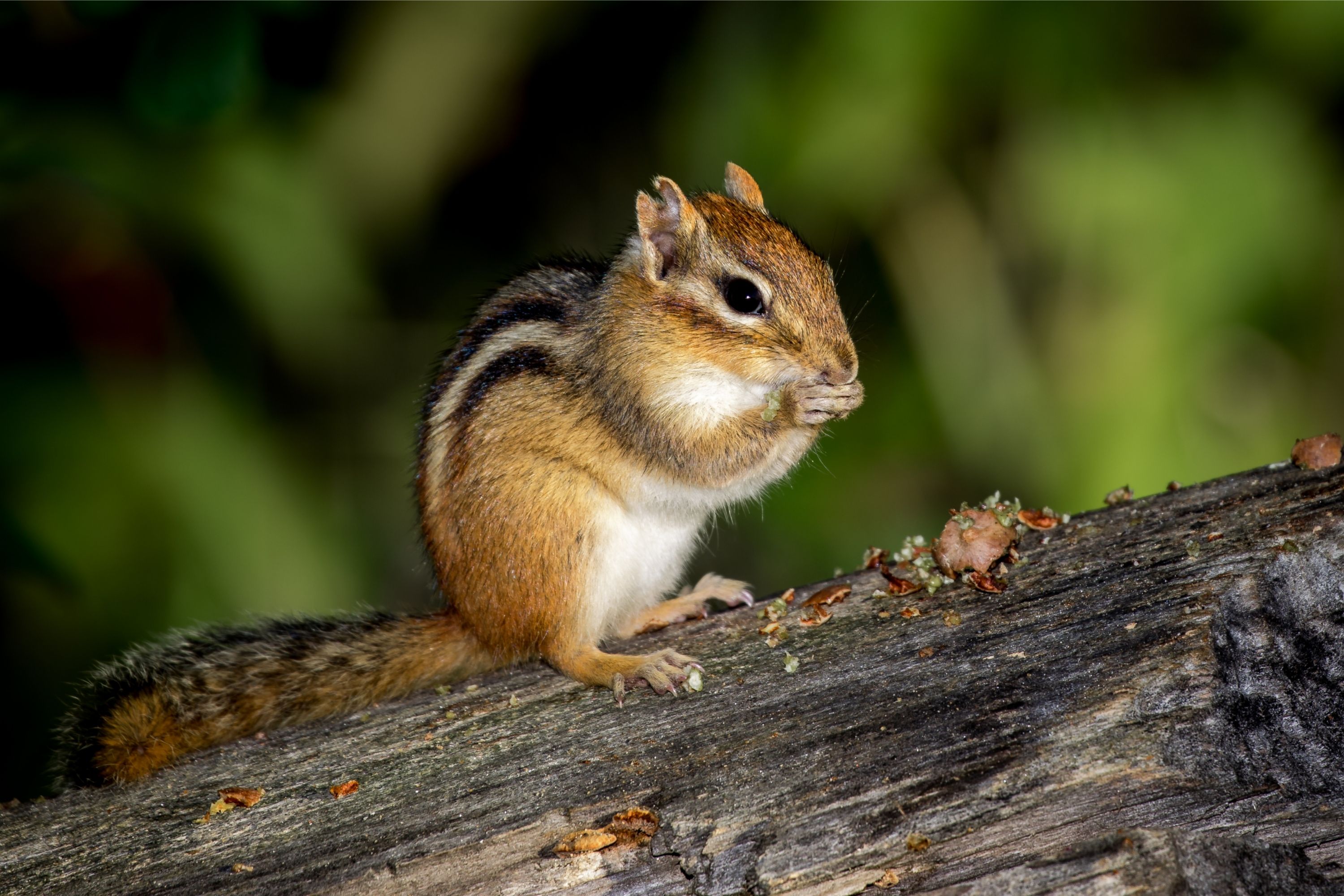Least chipmunk
(Tamias minimus)

Description
The least chipmunk (Neotamias minimus) is the smallest species of chipmunk and the most widespread in North America. It is the smallest species of chipmunk, measuring about 15.7–25 cm (6.2–9.8 in) in total length with a weight of 25–66 g (0.88–2.33 oz). The body is gray to reddish-brown on the sides, and grayish white on the underparts. The back is marked with five dark brown to black stripes separated by four white or cream-colored stripes, all of which run from the nape of the neck to the base of the tail. Two light and two dark stripes mark the face, running from the tip of the nose to the ears. The bushy tail is orange-brown in color, and measures 10–11 cm (3.9–4.3 in) long In some areas, where range overlap with the yellow-pine chipmunk occurs, it may be difficult or impossible to distinguish the two species in the field; laboratory examination of skeletal structures may be required. As in other chipmunks, there are four toes on each of the forefeet and five on the hindfeet. Females have eight teats. The brain to body mass ratio for least chipmunks is lower than that for other species of chipmunk living in the same area, suggesting that they prefer less complex environments. Least chipmunks are found through most of the western United States from northern New Mexico and western North and South Dakota to eastern California, Oregon and Washington, and throughout much of southern and western Canada from Yukon and southeastern British Columbia to central Ontario, and into the Upper Peninsula of Michigan and neighboring parts of Wisconsin and Minnesota. Throughout this range, as many as 21 subspecies have been identified. Less arboreal than other chipmunks,least chipmunks are commonly found in sagebrush habitats and coniferous woodland, and along rivers, but they also occur in alpine meadows, and on the edges of the northern tundra. Females enter estrus within a week of emerging from their burrow in the spring, and mating typically takes place between March and May. Gestation lasts 28 to 30 days, with a single litter of three to seven young being born each year; females who lose their first litter soon after birth may, however, sometimes be able to breed again in the same year.
Taxonomic tree:







